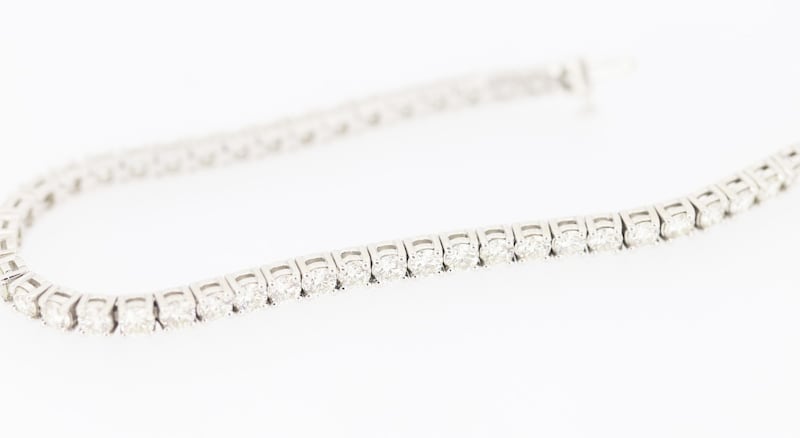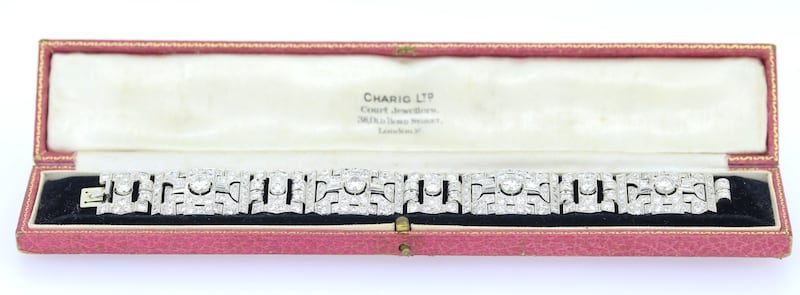Bidding at auctions used to sometimes be like a game of smoke and mirrors, as various parties would feign a lack of interest in certain items until the moment when they decided to pursue something vigorously. The auctioneer needed to be well versed in the various bidding styles as individuals would raise a finger or a catalogue or even touch their ear as a gesture to indicate they were bidding on a certain item.
Nowadays, with online auctions to the fore – either live or timed – the bidding game has become a more subdued affair. Watching screens doesn’t quite replace the frisson of excitement in a room full of people competing to buy a piece of furniture or jewellery or a painting.
“We find that timed auctions are working extremely well for us,” says Robert Usher of Usher Auctions in Kells, Co Meath. We are getting very positive feedback from long-time auction goers and clients about how the timed sales allow them a lot more ease of bidding, while never missing a lot. We have exponentially increased the number of bidders by having our auction online,” says Robert Usher, of Usher Auctions in Kells, Co Meath. Its timed antique and collectible auction is now live, with bidding ending from 6pm on Monday, July 7th.

In a timed auction, each lot has a specific finish time. “So lot 1 will close at 6pm on Monday, and each lot will finish 15 seconds after that,” says Usher. If you are interested in a piece, you can bid early and leave a maximum bid. If your highest bid at a point when the item is timed down is lower than your maximum bid, you will get the piece for that price.
READ MORE
“If the item goes over your maximum bid, you are out of the game. But you will get an email to say that you have been outbid. And at that point, if you are keeping a close check on your email, you can rejoin the bidding by setting another maximum or making a one-off bid.”
Alternatively, prospective buyers can wait until the last five minutes before the item is timed out and bid then. “It gets very busy at this point, but if there are a few bidders, the time is extended by five minutes to allow underbidders to come back in,” says Usher, whose auction includes furniture from Glendalough House in Co Wicklow. The only risk with this approach is that if you are interested in another item very close in the catalogue, you might miss it unless you have put in an early bid on it.
The other form of online auction is the live online auction, where the auctioneer is on the rostrum with his/her gavel, proceeding through the lots in the same way, except without a roomful of people bidding.




Damian Matthews, also in Kells, Co Meath, is holding a two-day online auction of jewellery, gold, silver and silver bullion on Sunday, July 6th and Monday, July 7th. As well as a great selection of rings, silver and pocket watches, the auction includes some fine bracelets. These include a diamond 46-stone tennis bracelet (€8,000-€12,000). This simple yet sophisticated bracelet was previously known as a diamond line bracelet or eternity bracelet until tennis champion, Chris Evert, broke hers during the 1978 US Open. Evert paused the game so that she could retrieve the scattered jewels, and since then, the understated yet stylish piece of jewellery has been called a tennis bracelet.
As you can imagine, people often do get carried away if they are particularly drawn to a piece of jewellery, but Matthews’s advice to potential buyers is to keep their emotions out of the transaction.
“An emotional decision is rarely a wise decision. When bidding at auction, try to dissociate yourself emotionally, otherwise you’re playing the auctioneer’s game,” he says. “And at the end of the day, the auctioneer works for the vendor, not the buyer.”
He also advises people to bid slowly so as not to make any mistakes. “Watch the form, listen to what is being said and how many bidders there are,” he says.
Lola Hynes from O’Reilly’s Auction Rooms on Francis Street, Dublin, says attending an auction in person is still preferable. “Our live online auctions are open to the public and if you are in the room, you can offer a smaller increment when bidding than the increments programmed into the computer,” she says. “There is also the human element, as auctioneers like real people in front of them.”
Buyers also need to be aware that the hammer price – the amount the piece is sold for at the auction – is not the final price, as auctioneer’s fees are then added to the price the buyer pays.
Usher says that auctioneers’ fees for buying and selling don’t vary too much.
Generally, for buying, he says they are between 18 per cent and 22 per cent plus VAT, admin, etc. For selling, fees are between 10 per cent and 18 per cent plus VAT and other fees, depending on the auction house.
Most auctioneers do however advise people to go see the items in person before an auction, rather than just relying on online catalogues.
“There is a great atmosphere in the auction rooms in the days before an auction. We are there to help answer questions about estimates and reserves [when an item won’t be sold below a certain price],” says Usher. He also believes that viewing items beforehand can give people a greater sense of which items might work well together.
“It’s about looking at each item, thinking about what it’s worth to you. There is no ticker tape for auctions,” says Matthews.
usherauctions.ie, matthewauctionrooms.com, oreillysfineart.com
What did it sell for?

Princess Diana’s ‘caring’ dress
Estimate $200,000-$300,000
Hammer price $520,000 (€445,000)
Auction house Julian’s

Princess Diana John Boyd straw hat
Estimate $20,000-$40,000
Hammer price $26,000 (€22,000)
Auction house Julian’s

Princess Diana Catherine Walker falcon evening gown
Estimate $200,000-$300,000
Hammer price $455,000 (€388,000)
Auction house Julian’s

Venice, the Return of the Bucintoro on Ascension Day, Canaletto
Estimate £20m-plus
Hammer price £31.9m (€37.2m)
Auction house Christie’s












